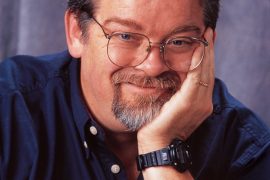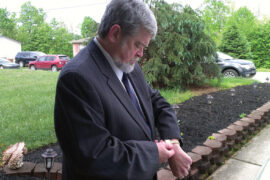By Clint McElroy
HQ 76 | WINTER 2011
Fate is a fascinating proposition. I never really believed in fate, but the confluence of events that led to my career in publishing recently left me wondering if there might be something to it. Consider this: I entered college in 1983 and, due to various circumstances, ended up graduating in five years. I was studying journalism at Marshall when, during my final semester in 1988, the department unveiled a lab equipped with several new computers with an odd name – Macintosh. I was immediately captivated by the sleek machine and its ability to transform my creative ideas into print utilizing digital design. As fate would have it, had I graduated in four years I never would have been introduced to the computer that would ultimately transform the publishing industry and my career path.
One year later after dropping out of graduate school and finding no luck landing a job, I decided to start my own business – a magazine for Huntington. The first thing I did was purchase a Macintosh, and it was with that brilliant piece of technology that I wrote, edited and designed the first issue of the Huntington Quarterly. The Macintosh saved me $5,000 per issue in layout and typesetting fees that I normally would have paid a commercial printer. Those savings alone empowered me to launch my business.
The Macintosh was, of course, the brainchild of Steve Jobs, the co-founder of Apple Computers who passed away in October. During his remarkable career, Jobs’ vision and genius revolutionized the computer industry as well as the film, music and telecommunications industries. Who knows what else he would have accomplished had he lived beyond his mere 56 years.
More than just an astute businessman, Jobs was also an artist. The products he unveiled to the world, including the iMac, iPod, iPhone and iPad, were all designed under his watchful eye and became examples of how technology and art can coalesce. Like most great artists, Jobs was a complicated man who struggled with inner demons throughout his life. He could be harsh and demeaning to his employees in his relentless pursuit of perfection. Despite his flaws, I had a profound respect for Steve Jobs, his maverick approach to business and his bravura in taking on the established suits at IBM. I marveled at the company he built (today the second-most valuable in the world), his minimalist approach to life and the “insanely great” products he churned out year after year that continued to make my life better.
In 1997, Jobs worked on an ad campaign that centered around the slogan “Think Different.” The simple campaign featured this phrase on old photographs of people who changed the world, including Thomas Edison, Albert Einstein, Mahatma Gandhi, Pablo Picasso, Martin Luther King Jr., Amelia Earhart and Bob Dylan. It was always Jobs’ dream to be counted among the people featured in that campaign, and I am confident that history will remember him as such. He was, after all, the greatest innovator of the late 20th and early 21st century.
In the end, perhaps the most valuable lesson that can be gleaned from the life of Steve Jobs was his challenge to all of us to “think different.” Challenge conventional wisdom, reject the criticisms of others and take risks. By doing so, you may find a creative solution to a problem, fulfill a lifelong dream or maybe, as he did, change the world.





